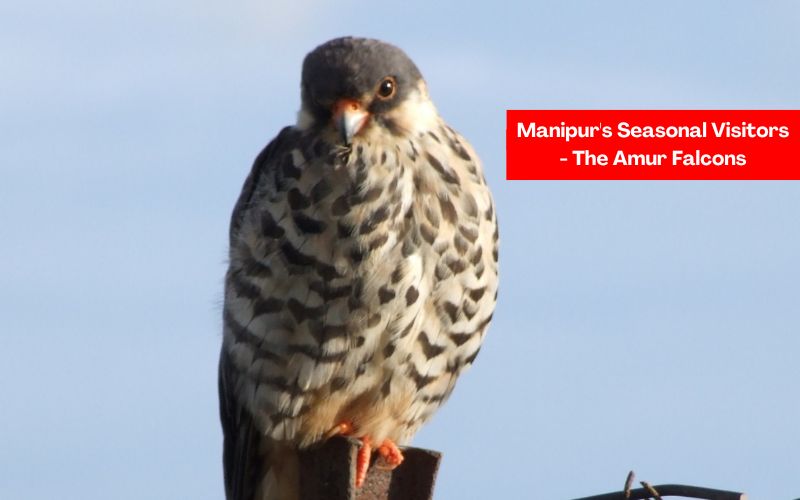
Manipur's Seasonal Visitors: The Amur Falcons
Brief overview
The
small-sized Amur falcon, a member of the falcon family, breeds in Siberia and
northern China but annually migrates to the warmer environment of southern
Africa via India. One of the largest bird migrations in the world, the yearly
migration of the Amur falcon, has begun. The northeastern region of India,
particularly Nagaland, Manipur, and Assam, will allows visitors to see this
breathtaking sight.
The
Amur Falcon, considered to be the world's longest-traveling bird, is said to
have made its way to Manipur's Tamenglong district after spending months at
their summer breeding locations in southeast Russia and northeast China. The
Wildlife division officials of the Forest Department and wildlife enthusiasts
on October 24 stated that these migratory birds were to stay in Manipur and
some parts of Nagaland till the end of November.
What makes this migration significant?
The
vast flocks of Amur Falcons, scientifically called "Falco amurensis,"
are considered by wildlife enthusiasts as a magnificent spectacle. These birds
have been marked in accordance with the Indian Wildlife Protection Act of 1972,
covering one of the longest migration routes.
It
is nothing short of a sight when the migratory Amur falcons arrive in Manipur's
Tamenglong region for their yearly stopover. We frequently use the phrase
"spotting" while describing wildlife. "Spotting" is a
relatively small word when referring about the arrival of Amur falcons.
With millions of birds in the sky, every tree, electric pole, wire, fence,
bush, and house they settle on become darker. The majority of birding
aficionados get overwhelmed with enthusiasm when they witness an event like
this. However, these birds don't linger for very long. Up until the middle of
November, people can witness this sight. As they begin their gradual trek to
Africa by the end of November, their numbers decrease.
India's
largest roosting area is in Nagaland. These birds gather in big groups to roost
in Pangti village in Wokha, Nagaland; the location is suitably dubbed Amur
Falcon Roosting Area Union. Pangti Village is also known as the Amur Falcon
Capital.
These
falcons are known as ‘”Akhuaipuina” in Tamenglong, Manipur. The forest
department and regional wildlife NGOs are working hard to provide these birds
with a secure roosting location while they are in the region. Because some of
the birds had geotags, the researchers were able to find them and keep close
tabs on their whereabouts.
Manipur: The upcoming Hotspot of Amur
Conservation in Northeast
Mass
awareness events like the Amur Falcon Festival are organised at the district
headquarters to spread the word about the need to protect these birds. In the
villages, there were also small-scale awareness initiatives organised
ocassionally. By using them as protection volunteers at the Amur roosting
locations during the migratory season, recently an effort was made to
integrate the local youngsters in the conservation project.
The
roosting locations are now turned into tourist attractions. Along with
this, Infrastructure development was also prioritised by the
administration in an effort to get tourists to the region to witness the swarms
of Amur falcons.
This
finally resulted in a drastic decrease in Amur hunting incidents in the
district as a result of the administration's various departments' persistent
and coordinated efforts. Both fresh and dried Amur falcons are no longer
offered for sale in the neighbourhood markets.
It appears that the
Amurs are receiving more affection and attention every year
Disclaimer: The opinions expressed in this article are those of the author's. They do not purport to reflect the opinions or views of The Critical Script or its editor.

Newsletter!!!
Subscribe to our weekly Newsletter and stay tuned.

















Related Comments